Cómo elegir entre baterías de 6 V y 12 V para sus necesidades energéticas
Al seleccionar una batería para su aplicación, es fundamental comprender las diferencias entre las baterías de 6 V y 12 V. Ya sea que esté alimentando un carrito de golf, una autocaravana, un sistema solar o una unidad de energía de respaldo, elegir la batería correcta de 6 V o 12 V puede influir significativamente en el rendimiento, la vida útil y la eficiencia. En este artículo, analizaremos a fondo todos los aspectos importantes para ayudarle a determinar la mejor opción para sus necesidades en cuanto a baterías de 6 V y 12 V.
- Comprensión de los conceptos básicos de las baterías de 6 V y 12 V
- ¿Por qué elegir baterías de 6 V y 12 V para diferentes aplicaciones?
- Comparación de la vida útil entre baterías de 6 V y 12 V
- Diferencias físicas de tamaño y peso entre baterías de 6 V y 12 V
- Requisitos de mantenimiento para baterías de 6 V y 12 V
- Comparación de costos entre baterías de 6 V y 12 V
- Diferencias de rendimiento que debe conocer sobre las baterías de 6 V y 12 V
- Configuraciones en serie y paralelo para baterías de 6 V y 12 V
- Impacto ambiental de las baterías de 6 V y 12 V
- Cómo elegir baterías de 6 V y 12 V según sus necesidades específicas
- Marcas populares que ofrecen baterías de 6 V y 12 V de calidad
- Reflexiones finales sobre la elección entre baterías de 6 V y 12 V
Comprensión de los conceptos básicos de las baterías de 6 V y 12 V
Antes de profundizar en las comparaciones, es importante comprender qué son realmente las baterías de 6 V y 12 V. Las baterías se clasifican según su voltaje de salida. Una batería de 6 V proporciona seis voltios de electricidad, mientras que una de 12 V ofrece doce voltios. Estos dos tipos de baterías se utilizan comúnmente en diversas industrias, desde vehículos recreativos hasta instalaciones solares.
Las baterías de 6 V suelen fabricarse con placas más pesadas y gruesas, lo que les permite ofrecer ciclos de descarga más profundos. En cambio, las baterías de 12 V suelen ser más ligeras y se encuentran habitualmente en arrancadores de coches, sistemas solares pequeños y dispositivos electrónicos portátiles.
>>Vea también Cuánto tiempo se debe mantener un cargador lento en la batería de una cortadora de césped
¿Por qué elegir baterías de 6 V y 12 V para diferentes aplicaciones?
La elección entre baterías de 6 V y 12 V depende en gran medida de la aplicación específica. Por ejemplo, las baterías de 6 V se prefieren en aplicaciones de ciclo profundo, como carritos de golf y sistemas de energía renovable, porque soportan un mayor número de ciclos de carga y descarga. Por otro lado, las baterías de 12 V son más comunes en la industria automotriz y en las necesidades de suministro rápido de energía.
Al considerar qué opción es mejor, debe tener en cuenta factores como los requisitos de energía, las limitaciones de espacio, la vida útil esperada de la batería y las rutinas de mantenimiento.
Aplicaciones clave para baterías de 6 V
Carritos de golf
Sistemas de energía solar fuera de la red
máquinas industriales
patinetes eléctricos
Fuentes de alimentación de respaldo a gran escala
Aplicaciones clave para baterías de 12 V
Coches y camiones
pequeñas embarcaciones
Autocaravanas y caravanas
Sistemas de alarma para el hogar
Electrónica portátil
Comparación de la vida útil entre baterías de 6 V y 12 V
Un factor importante al elegir entre baterías de 6 V y 12 V es su vida útil. Generalmente, las baterías de 6 V suelen durar más gracias a su robusta construcción interna. Están diseñadas para soportar descargas profundas y recargas cientos o incluso miles de veces.
En comparación, si bien las baterías de 12 V aún son duraderas, es posible que no brinden la misma vida útil, especialmente si no están diseñadas específicamente para un uso de ciclo profundo.
¿Por qué las baterías de 6 V suelen durar más que las de 12 V?
Las placas más gruesas de las baterías de 6 V les permiten soportar descargas profundas sin sufrir daños internos. Este diseño permite más ciclos de recarga, lo que las hace ideales para inversiones a largo plazo en sistemas que requieren descargas profundas y constantes.
Las baterías de 12 V, en particular las de arranque, están diseñadas para periodos cortos de alta producción de energía, en lugar de periodos de descarga largos y lentos. El ciclo profundo de una batería de arranque típica de 12 V puede acortar drásticamente su vida útil.
Diferencias físicas de tamaño y peso entre baterías de 6 V y 12 V
Al decidir entre baterías de 6 V y 12 V, también es esencial tener en cuenta las dimensiones físicas y el peso.
Las baterías de 6 V suelen ser más altas y pesadas que las de 12 V. Por lo tanto, si trabaja con limitaciones de espacio, instalar baterías de 6 V puede requerir soluciones creativas, como rediseñar los compartimentos o ajustar los soportes.
Las baterías de 12 V, al ser más ligeras y compactas, son más fáciles de manipular e instalar. Son la opción más práctica para vehículos pequeños o sistemas portátiles.
Requisitos de mantenimiento para baterías de 6 V y 12 V
Otro punto de comparación es el mantenimiento. Tanto las baterías de 6 V como las de 12 V requieren un mantenimiento regular, pero el nivel de atención necesario puede variar.
Las baterías de plomo-ácido inundadas de 6 V suelen requerir recargas de agua y limpieza de terminales más frecuentes. También pueden requerir cargas de ecualización para evitar la sulfatación en las placas.
Las baterías de 12 V, especialmente las selladas como las AGM (Absorbent Glass Mat) o las de iones de litio, prácticamente no requieren mantenimiento. Esta comodidad resulta atractiva para quienes prefieren configurarlas y olvidarse de ellas.
Sin embargo, el mantenimiento adecuado de ambos tipos extiende significativamente la vida útil de la batería y mejora el rendimiento.
Mejores prácticas para el mantenimiento de baterías de 6 V
Revise y rellene periódicamente el agua destilada.
Terminales limpios para evitar la corrosión
Realizar una carga de ecualización periódica
Mejores prácticas para el mantenimiento de baterías de 12 V
Monitorizar el estado de carga
Asegúrese de que las conexiones estén firmes y limpias
Conservar en un lugar fresco y seco.
Comparación de costos entre baterías de 6 V y 12 V
Al comparar costos, las baterías de 6 V suelen tener un precio inicial más alto, especialmente para los modelos de ciclo profundo de alta calidad. Sin embargo, su mayor vida útil y rendimiento superior pueden hacerlas más económicas a largo plazo.
Las baterías de 12 V suelen ser más baratas al principio, pero los reemplazos frecuentes debido a una vida útil más corta pueden sumarse con el tiempo.
Al calcular el costo total de propiedad, es vital tener en cuenta no solo el precio de compra, sino también los costos de mantenimiento, el posible tiempo de inactividad y la frecuencia de reemplazo.
Diferencias de rendimiento que debe conocer sobre las baterías de 6 V y 12 V
El rendimiento es otro aspecto crucial. En aplicaciones que requieren descargas profundas y sostenidas, las baterías de 6 V superan a las de 12 V al proporcionar energía constante durante períodos más largos.
Las baterías de 12 V son superiores cuando se necesita un suministro rápido de energía. Por ejemplo, arrancar el motor de un vehículo requiere una gran cantidad de energía, algo que las baterías de 12 V están diseñadas específicamente para proporcionar.
Métricas de rendimiento para comparar
Profundidad de descarga
Ciclo de vida
Tasas de carga y descarga
Densidad de energía
Curva de potencia de salida
Comprender estas métricas le ayudará a adaptar mejor las baterías de 6 V y 12 V a sus necesidades energéticas específicas.
Configuraciones en serie y paralelo para baterías de 6 V y 12 V
Una ventaja fascinante de las baterías de 6 V es la flexibilidad que ofrecen para crear configuraciones personalizadas de voltaje y capacidad a través de configuraciones en serie y en paralelo.
Por ejemplo, dos baterías de 6 V conectadas en serie producen 12 voltios, pero conservan la misma capacidad de amperios-hora. Conectar las baterías en paralelo duplica la capacidad de amperios-hora, manteniendo el mismo voltaje.
Por el contrario, las baterías de 12 V a menudo se utilizan como unidades independientes o combinadas en paralelo para lograr mayor capacidad, lo que simplifica el diseño pero limita las opciones de personalización.
Comprender cómo funcionan las conexiones en serie y en paralelo es fundamental si planea diseñar un sistema que utilice baterías de 6 V y 12 V.
Impacto ambiental de las baterías de 6 V y 12 V
La eliminación de baterías y el impacto ambiental son factores importantes, especialmente con el creciente énfasis en la tecnología sustentable.
Las baterías de plomo-ácido de 6 V y 12 V son reciclables. Las prácticas adecuadas de reciclaje permiten recuperar plomo, plástico y otros materiales, minimizando así el daño ecológico.
Las baterías modernas de iones de litio de 12 V tienen una eficiencia mejorada y una huella ambiental menor, pero aún presentan desafíos de reciclaje debido a sus complejas composiciones químicas.
Al elegir entre baterías de 6 V y 12 V también hay que tener en cuenta lo fácil que será reciclar y desechar la batería al final de su vida útil.
Cómo elegir baterías de 6 V y 12 V según sus necesidades específicas
La selección entre baterías de 6 V y 12 V depende en gran medida de las necesidades específicas de su proyecto o sistema.
Si necesita un banco de baterías para almacenamiento solar a largo plazo y dispone del espacio, las baterías de 6 V pueden ofrecer una mejor relación calidad-precio y mayor durabilidad. Si la portabilidad, la facilidad de instalación y la rápida recarga de energía son sus principales prioridades, las baterías de 12 V podrían ser la opción más inteligente.
Guía de decisión rápida
|
Guión |
Batería recomendada |
|
Sistemas solares fuera de la red |
Baterías de 6 V |
|
Arranque de motores |
Baterías de 12 V |
|
Energía de respaldo |
Baterías de 6 V |
|
dispositivos portátiles |
Baterías de 12 V |
|
Sistemas de energía para vehículos recreativos |
Mezcla de ambos según el diseño |
>>Ver también la Guía completa de baterías de gel AGM y de plomo ácido para carros de golf
Marcas populares que ofrecen baterías de 6 V y 12 V de calidad
Varios fabricantes producen baterías de 6 V y 12 V de alta calidad. Al elegir una batería, la reputación de la marca es fundamental para garantizar un producto confiable, con un buen servicio al cliente y garantías.
Las mejores marcas de baterías de 6 V
Compañía de baterías Trojan
Rollos Surrette
Batería de la corona
Las mejores marcas de baterías de 12 V
Baterías Optima
VMAXTANKS
Baterías Battle Born (para litio de 12 V)
Seleccionar baterías de marcas confiables puede ahorrarle muchos dolores de cabeza y garantizar una mejor satisfacción a largo plazo.
Reflexiones finales sobre la elección entre baterías de 6 V y 12 V
En conclusión, elegir entre baterías de 6 V y 12 V se reduce, en última instancia, a comprender las necesidades energéticas específicas de su aplicación. Cada tipo tiene sus ventajas y desventajas. Las baterías de 6 V ofrecen una mayor vida útil y un mejor rendimiento de ciclo profundo, lo que las hace ideales para sistemas de energía renovable y aplicaciones de alto rendimiento. Por otro lado, las baterías de 12 V ofrecen facilidad de uso, menor peso y un rápido suministro de energía, lo que las hace perfectas para vehículos y sistemas portátiles.
Al evaluar cuidadosamente sus necesidades energéticas, su presupuesto y el diseño de su sistema, estará bien preparado para tomar la decisión correcta entre baterías de 6 V y de 12 V. Recuerde siempre que la calidad y el mantenimiento son fundamentales, independientemente del tipo que elija.
Elegir sabiamente entre baterías de 6 V y 12 V garantizará que su sistema funcione de manera eficiente y confiable durante los próximos años.

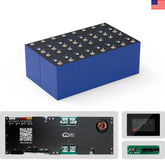



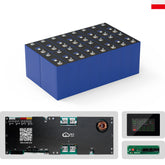

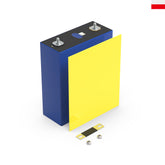

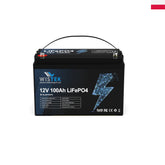
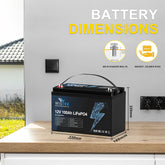


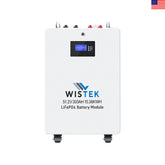
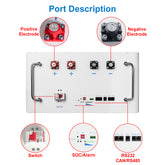
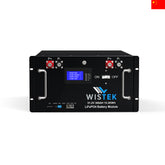
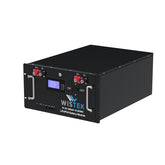


Leave a comment
All blog comments are checked prior to publishing